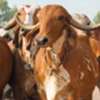Enter the mango season, and the fruit lovers are all smiles!
Mango is one of the most loved fruits in India. From children to adults, everybody awaits the summer season each year so that they can savor their favorite variety of mangoes. Considered the ‘King of the Fruits’ for the right reasons, mango comes in different varieties, and Gir Kesar mango is one of them.
Kesar mangoes are one of the most popular varieties of mango exported from India, and Gir Kesar mango is one of its types. Here’s everything about Gir Kesar mango.
What is Gir Kesar Mango?
As the name suggests, Gir Kesar mango derives its name from the region where it is grown widely. The mango is known for its bright orange pulp, given the name. Hailing from Talala Gir, a town of Gir Somnath district, this variety of mango is grown in the talukas of Junagadh district, specifically in the Gir territory, including Gir National Park and Wildlife Sanctuary and all the surrounding tehsils of Dhari and Khambha of Amreli district in Gujarat, India. It is popularly referred to as the ‘Queen of Mangoes’ and gives tough competition to Alphonso (Hapus) in terms of taste.
History of Gir Kesar Mango
Gir Kesar mango has an interesting history. As per the research of the botanic team of Junagadh Agriculture University, these mangoes were first spotted by Junagadh Wazri, Sale Bhai, in Vanthali taluka of Junagadh. They were later sent to Sheikh Jehangir Mia of Mangrol, who was so smitten by the taste of this delicious fruit that he decided to sow the seeds in the kernel of his garden. Apparently, he named them ‘Saale ni Ambadi’
Afterward, some grafts were done on the plant. More than 70 grafts were planted at the Junagadh Laal Dori farm located on the foothills of the Girnar Mountains. Following three years of cultivation, the fruit was presented to Junagadh Nawab Babi Mahabat Khan Ji III. The taste of the mango left him mesmerized. He named it Kesar. The rest is history.
There’s another story about the origin of this mango. Reportedly, the fruit was planted by a farmer in Saurashtra and later presented to the king.
Regardless of the story of its origin, one fact remains the same – once tasted, the flavor of this fruit will linger in your mouth for the longest time.
Gir Kesar Mango Farming
Besides the Gir, this variety of mango is cultivated in the surrounding tehsils of Dhari and Khambha of Amreli district. As per the records, it is grown in about 20,000 hectares. The annual production of the mangoes goes up to a whopping 2 lakh tonnes.
So, why does this variety of mangoes grow only in the Gir region of India?
It is because of the environmental and soil conditions of that area. In 2011, the Government of India granted the Geographical Indication or GI tag to this mango variety and recognized its unique qualities and characteristics directly linked to its geographical origin in the Gir region of Gujarat.
Talala Gir is a popular mango yard located 45 kilometers from the famous Gir National Park. It is the biggest market associated with the production of Gir Kesar mangoes. Other cities of Gujarat that are in the business of growing different varieties of Kesar and other forms of mangoes include Junagadh. Kodinar, Mendarda, Maliya, Una, and Visavadar.
The appearance of the Gir Kesar Mango Tree and its Fruit
This tree is hard in appearance and structure, with single stems that grow slowly and remain evergreen throughout their lifespan. Apparently, the tree can live for 200-300 years and rise to a height of up to 50 feet. The graft takes up to 4 years to start fruiting. Compared to other native varieties of mango, this one offers a higher yield, ranging up to an average of 200 kilograms per tree.
Talking about the appearance of its fruits, the mangoes have a small to medium size and a round or oval shape. The color of the skin is bright orange, with hues of yellow and a tinge of green towards the end of the stem. When you cut the mango open, the flesh looks yellowish-orange.
When is the Best Time for Gir Kesar Mango Farming?
If you want to cultivate Gir Kesar mango, April is considered the best time. The season for these mangoes typically starts from mid-April and runs up to mid-July, with peak harvest occurring in May. That said, the exact timing of the season may vary, depending on the weather conditions and other relevant factors. It is vital to mention that this variety of mangoes is available for a limited time each year, making it expensive, exclusive, and highly sought-after for mango lovers.




